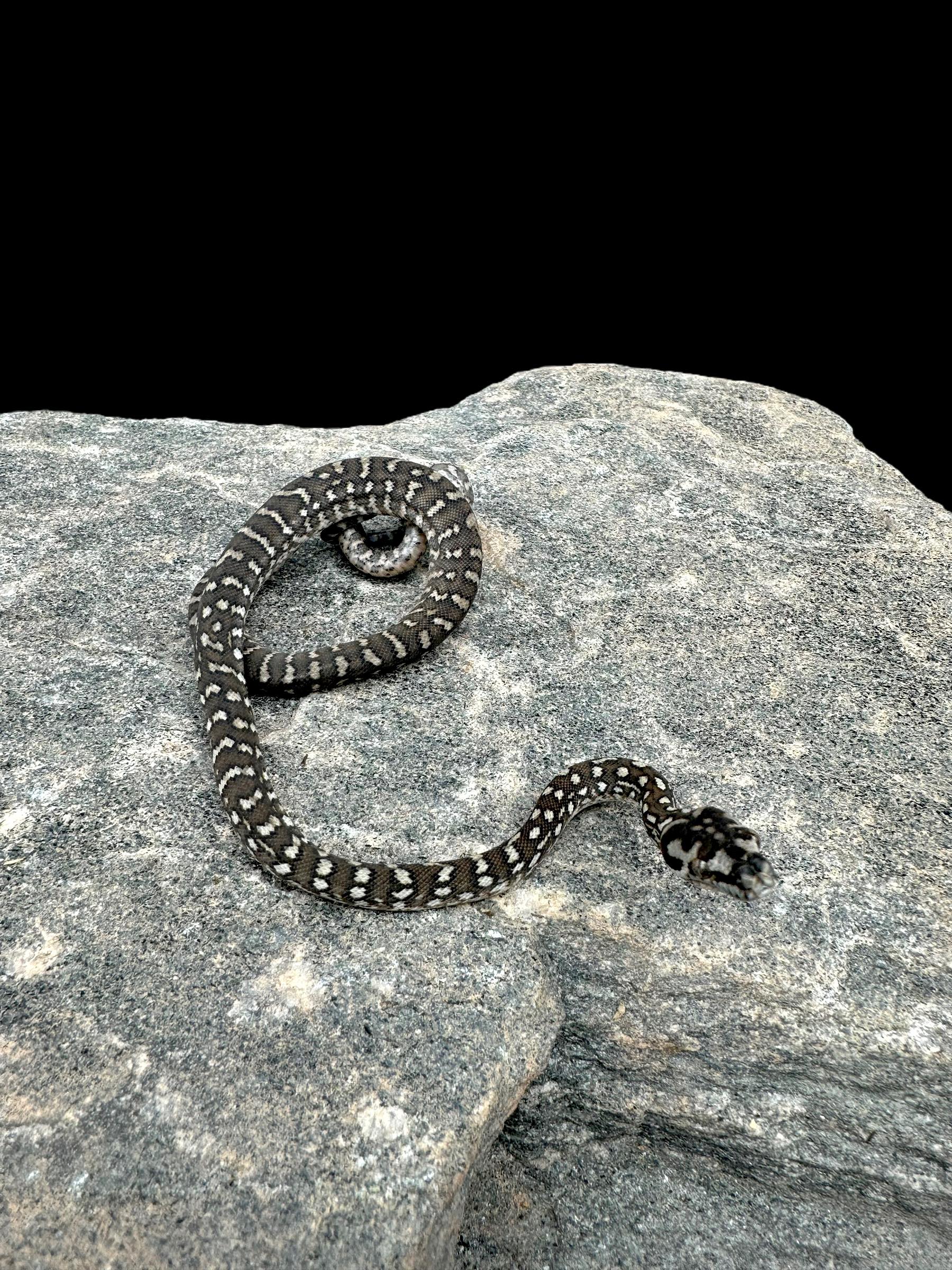Photo Disclaimer
Description
Bredl’s Python
Morelia bredli
Common Names: Bredl’s Python, Centralian Carpet Python
Species Overview
-
Size: Adults typically reach 6–8 feet (1.8–2.4 m), with some individuals growing larger, occasionally exceeding 10 feet. Despite their length, they are generally more slender and agile compared to other carpet python species.
-
Appearance:
-
Normal Bredl’s Pythons have a reddish-brown to brick-orange base colour, overlaid with irregular darker brown to black blotches.
-
Many show cream or tan speckling that enhances the contrast, giving them a rugged, desert-camouflage look.
-
They are distinct from coastal and jungle carpet pythons due to their warmer tones and less banded, more irregular patterns.
-
-
Distribution: Endemic to Central Australia, especially the southern Northern Territory, where they occupy arid and semi-arid zones.
-
Habitat: Found in rocky ranges, open woodlands, and scrublands, often seeking shelter in rock crevices, hollow logs, or dense vegetation.
-
Behaviour: Semi-arboreal and opportunistic, they are active hunters that feed on mammals, birds, and reptiles. In the wild, they are often seen basking on rocky outcrops.
Captive Care
-
Enclosure: Adults require large enclosures, at least 6 ft × 2 ft × 2 ft, with climbing opportunities such as sturdy branches and ledges. Provide hides at both warm and cool ends, along with visual barriers.
-
Temperature & Humidity: Provide a basking spot at 88–92°F (31–33°C), with an ambient gradient down to 75–80°F (24–27°C). Humidity should remain moderate, around 40–60%, with occasional increases during shedding.
-
Diet: Juveniles feed readily on hopper mice and small rats every 7–10 days. Adults thrive on medium to large rats, or equivalent prey, every 14–21 days.
-
Behaviour in Captivity: Captive-bred Bredl’s Pythons are known for being docile, hardy, and dependable feeders, making them one of the most beginner-friendly members of the carpet python complex.
-
Special Considerations: They thrive in naturalistic setups with climbing structures and visual enrichment, which encourage their natural semi-arboreal behaviour.
Genetics Note
-
The Normal Bredl’s Python is the wild-type form.
-
Unlike some other carpet python species, there are very few selectively bred morphs of Morelia bredli. The species is primarily maintained as pure locality stock, valued for its natural beauty.
The Bredl’s Python is often regarded as the most forgiving and beginner-friendly of the carpet pythons, with a calm temperament, beautiful natural coloration, and manageable husbandry requirements.

